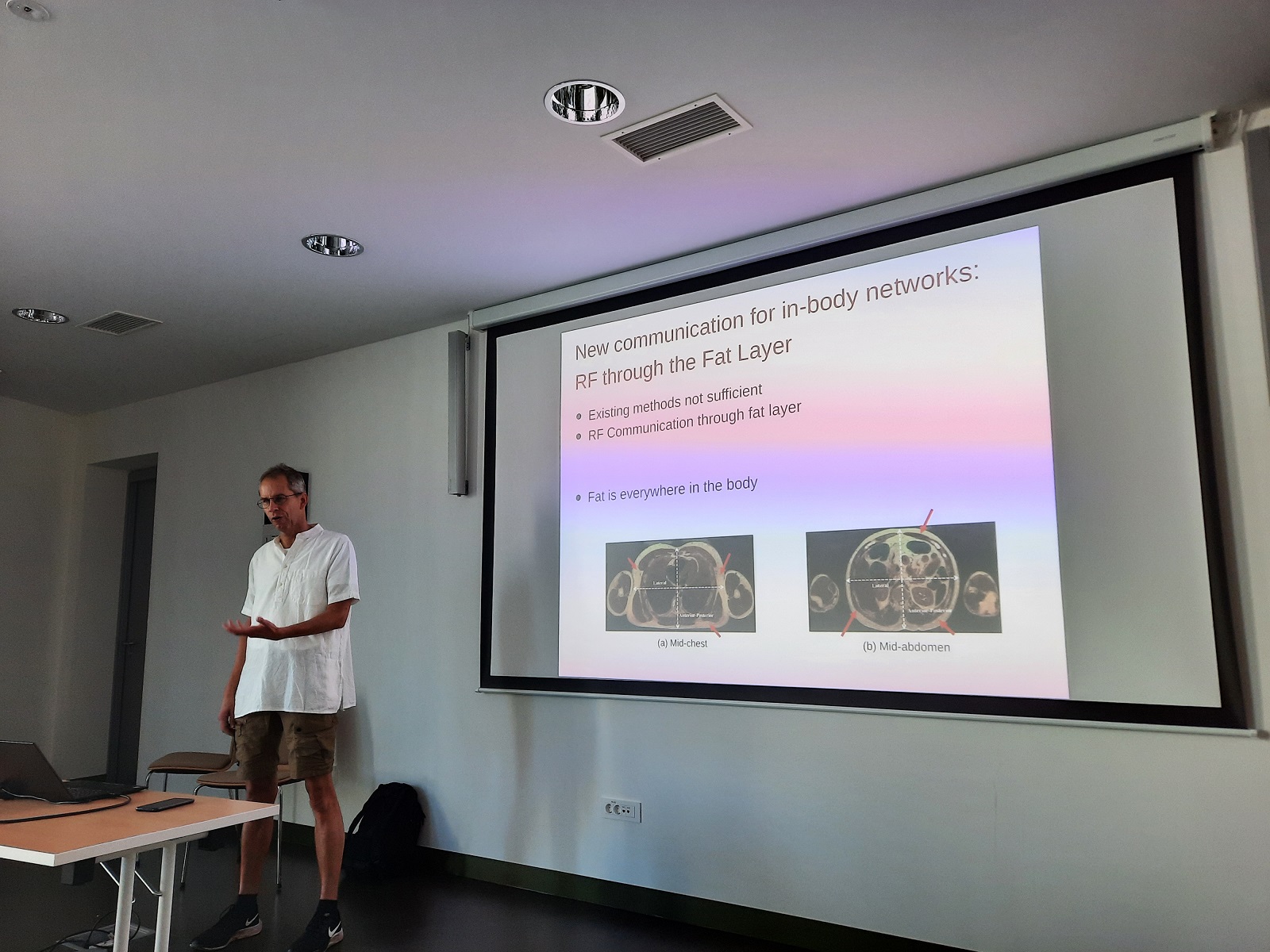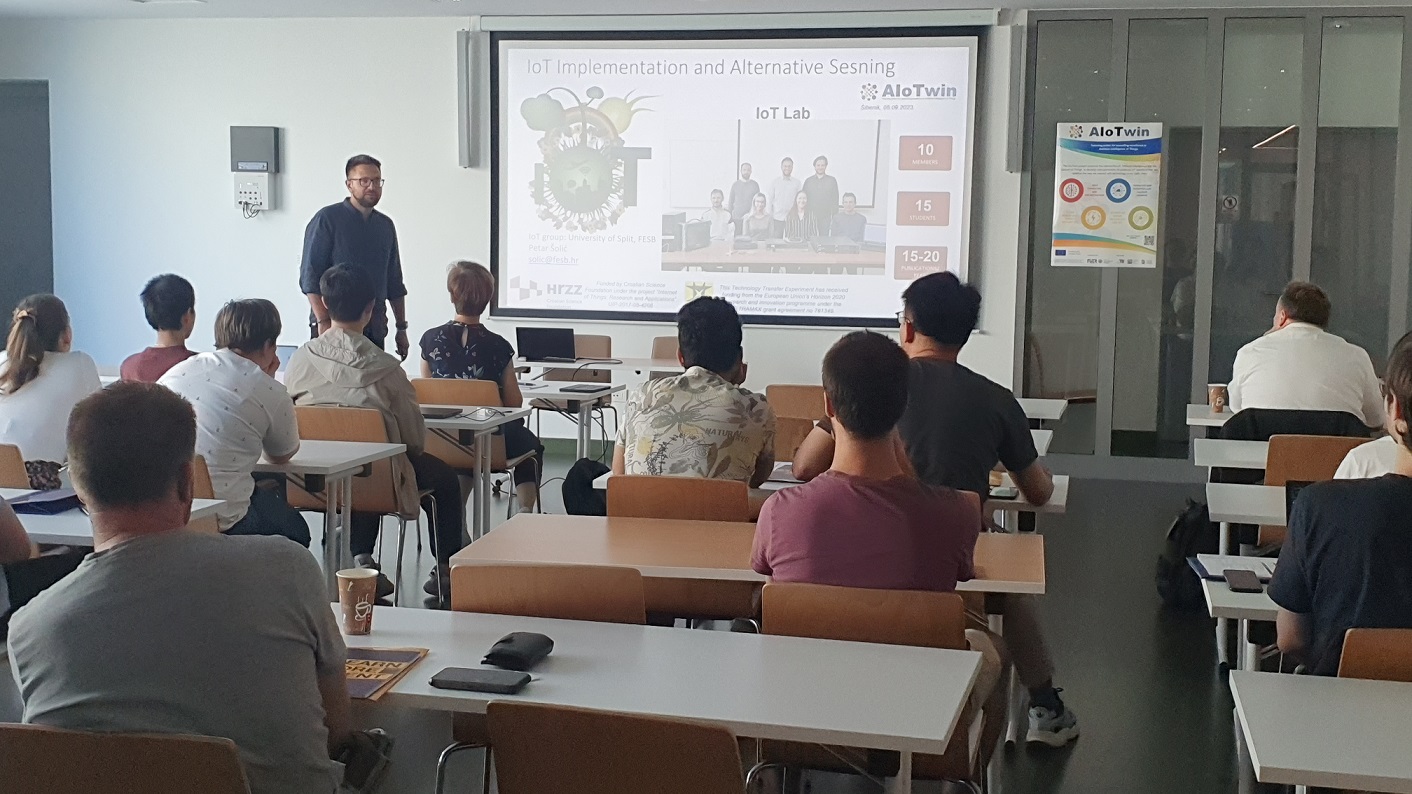Petar Šolić - IoT implementation and Alternative Sensing
In this talk, an overview of IoT lab (University of Split, FESB) activities is to be provided. This involves an overview of practical full-stack implementation scenarios in different IoT use-cases. In addition, an overview of alternative sensing methodologies is to be provided aiming at reducing implementation costs and energy requirements.
Danh Le-Phuoc - Knowledge Graphs for Building Perception Systems
 Semantic memory and episodic memory play a critical role in human perception. The semantic memory refers to our brain’s repository of general world knowledge and episodic memory refers to our “episodic memory system”, which encodes, stores, and allows access to “episodic memories”, e.g. recollection of personally experienced events situated within a unique spatial and temporal contexts. This inspired us to introduce the semantic stream, a dynamic knowledge graph, wherein semantic and episodic memories are represented as interconnected graphs. This presentation allows integration and fusion of various kinds of sensory observations, e.g, images, videos and point clouds, into interlinked sub-symbolic and symbolic data streams at different levels of semantic abstractions.
Semantic memory and episodic memory play a critical role in human perception. The semantic memory refers to our brain’s repository of general world knowledge and episodic memory refers to our “episodic memory system”, which encodes, stores, and allows access to “episodic memories”, e.g. recollection of personally experienced events situated within a unique spatial and temporal contexts. This inspired us to introduce the semantic stream, a dynamic knowledge graph, wherein semantic and episodic memories are represented as interconnected graphs. This presentation allows integration and fusion of various kinds of sensory observations, e.g, images, videos and point clouds, into interlinked sub-symbolic and symbolic data streams at different levels of semantic abstractions. Thiemo Voigt - Towards In-body and Battery-free Internet of Things
 In this talk, I present Fat-IBC, a novel approach for in-body communication that uses the human body’s adipose (fat) tissue as a communication channel for radio-frequency based communication. Situated between layers of skin and muscle that act as a wave guide, the fat tissue allows for energy-efficient communication inside the body. Fat-IBC enables multi-hop Internet of Things (IoT) networks inside the body that allow to transfer data from deeply embedded places in the body to a place where it is easy to couple signals in and out. The relatively high bandwidth Fat-IBC enables supports interesting applications such as bionic arms and exoskeletons without cables. I further present some recent work on backscatter communication. Backscatter communication enables a drastic reduction of the energy consumption by outsourcing the energy-hungry task of generating the radio wave. This reduction of energy usage enables devices to run on harvested energy rather than on batteries. However, to ensure application progress also when there is no energy to harvest, state must be saved on non-volatile memory. I show how the combination of these two approaches enables a high data yield for sensing applications even when energy and a carrier wave are not always present. We believe that these technologies will also pave the way for battery-free IoT inside the body.
In this talk, I present Fat-IBC, a novel approach for in-body communication that uses the human body’s adipose (fat) tissue as a communication channel for radio-frequency based communication. Situated between layers of skin and muscle that act as a wave guide, the fat tissue allows for energy-efficient communication inside the body. Fat-IBC enables multi-hop Internet of Things (IoT) networks inside the body that allow to transfer data from deeply embedded places in the body to a place where it is easy to couple signals in and out. The relatively high bandwidth Fat-IBC enables supports interesting applications such as bionic arms and exoskeletons without cables. I further present some recent work on backscatter communication. Backscatter communication enables a drastic reduction of the energy consumption by outsourcing the energy-hungry task of generating the radio wave. This reduction of energy usage enables devices to run on harvested energy rather than on batteries. However, to ensure application progress also when there is no energy to harvest, state must be saved on non-volatile memory. I show how the combination of these two approaches enables a high data yield for sensing applications even when energy and a carrier wave are not always present. We believe that these technologies will also pave the way for battery-free IoT inside the body. Alexander Artikis - Can computers understand what is happening? A Tutorial on Complex Event Recognition
Complex Event Recognition (CER) refers to the activity of detecting patterns in streams of continuously arriving “event” data over (geographically) distributed sources. CER is a key ingredient of many contemporary Big Data applications that require the processing of such event streams in order to obtain timely insights and implement reactive and proactive measures. Examples of such applications include the recognition of attacks in computer network nodes, human activities on video content, emerging stories and trends on the Social Web, traffic and transport incidents in smart cities, error conditions in smart energy grids, violations of maritime regulations, cardiac arrhythmias and epidemic spread. In each application, CER allows to make sense of streaming data, react accordingly, and prepare for counter-measures. In this tutorial, we will present the formal methods for CER, as they have been developed in the artificial intelligence community. To illustrate the reviewed approaches, we will use the domain of maritime situational awareness.


